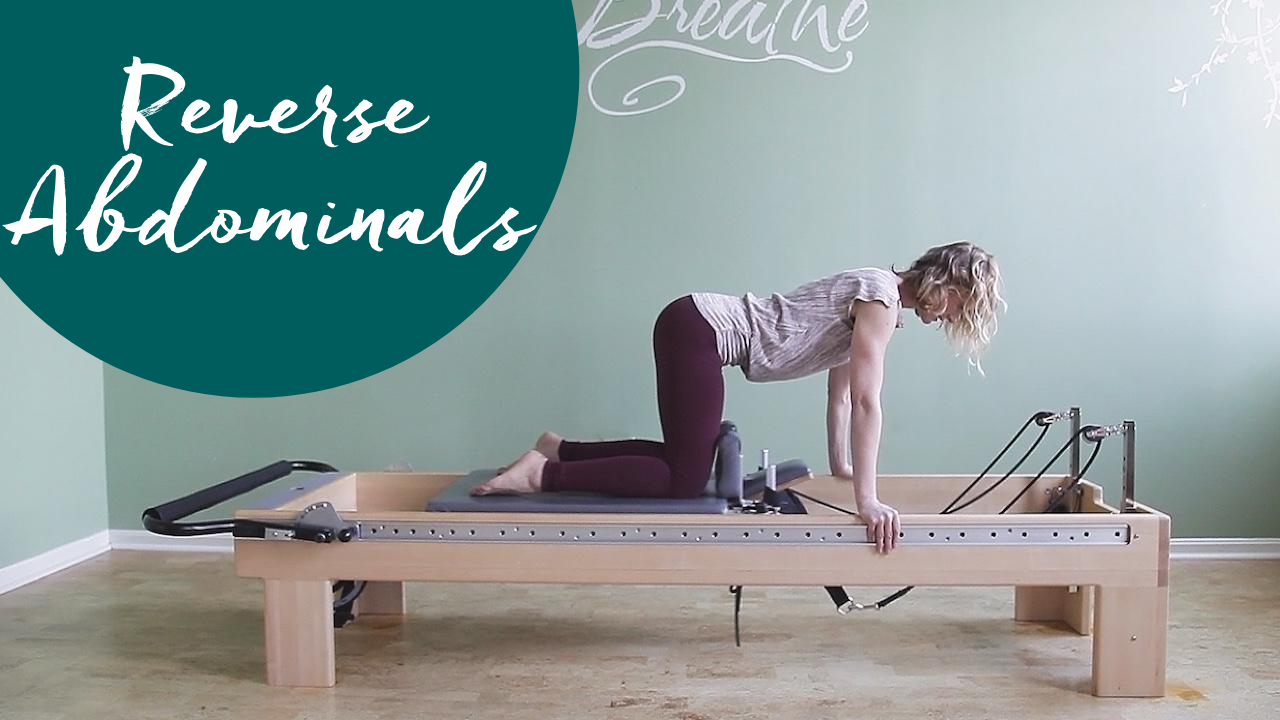Reverse Abdominals: 2 Common Mistakes
Jan 21, 2020
Reverse Abdominals on the Reformer - you might know it as Reverse Knee Stretch or Kneeling Abdominals Facing Back - is a fantastic abdominal strengthener, but your arms, shoulders, and hip flexors get quite a lot of work, too.
Reverse Abdominals is one of those Reformer exercises that feels really unfamiliar the first time you do it, which makes it the ideal exercise to intentionally confuse the brain and body and through that confusion develop different (and better!) movement patterns. I use this exercise with almost all my beginners (unless contraindicated) to teach trunk stability and improve core strength.
Here it goes:
If your student doesn't feel the work in this exercise, then this is most likely an indication that something is going wrong. If done correctly, this is not an easy exercise.
Reverse Abdominals Common Mistakes #1: Collapsing (extending) the lumbar spine
A common mistake is to drop the lower back, which shortens your hip flexors and reduces the need for your abdominals to work. This will make it feel quite a bit easier. Clients with anterior pelvic tilt are likely to make this mistake.
Here are some tips and cues to help your student use her abdominals:
- Draw the abdominals deep up into the body while your knees come underneath you. In the Flat Back Variation, pull your stomach inward and do even more of that in the Round Back Variation.
- Keep the range of movement very small. Don’t overdo it. Less is more, remember?
- Place one hand or forearm underneath your student’s belly and ask her to pull away from your hand as she initiates the movement.
- Place a dowel onto your student's back, and ask her to find the three-point-contact.
- I often work in a reverse imprint (flattened versus neutral lumbar spine). That might be the only way to get them to use their abdominals. Or just practice the Round Back Variation, they’ll feel that for sure.
Reverse Abdominals Common Mistakes #2: Pulling from your shoulders
Your torso should remain in place while your legs move underneath your body. If your student pulls from her shoulders, her body will move forward and backward.
This is not necessarily wrong but it is now a lat pull exercise and has a different purpose. Clients whose shoulders are weak will do it this way because concentric activation of the shoulder extensor muscles is easier than isometric stabilization while moving the legs.
- You can place your flat palm against your student's head to stop her from, moving forward and back, but if this doesn't help or you see a different mistake creep into the exercise then she might just be too weak to do it right.
- Standing next to your client's shoulders, place both your hands against the top of her shoulders and stop her when she wants to lean forward.
- Wrap your hand around your student's upper arm and hold it in place.
Related: Tips For Self-Correcting In Quadruped Exercises
If you try several of these cues, but your student can’t seem to “get” the exercise then it might be that her body just doesn’t know how to recruit the right muscles. In this case, either drastically reduce the spring tension or try a different variation, such as Round Back.
To add a different plane of movement, try a single leg variation or an oblique variation. You'll find detailed tutorials for them in the Pilates Encyclopedia membership. Learn more...
I'd love to hear from you: What are your favorite cues or teaching tips for Reverse Abdominals on the Reformer? Shoot me an email.










